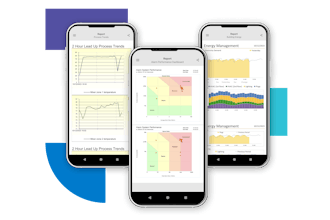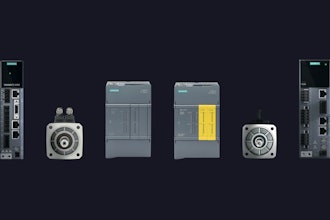
 Randy Woods
Randy Woods Channel partners frequently have more influence than the manufacturers on how prospects make decisions. Historically, the channel has provided scale to manufacturing sales operations, and manufacturers have accepted a reduction in the amount of control they have over revenue streams. More recently, it has become clear that being distanced from end customers comes with a more significant cost—the inability to identify and quickly react to their needs.
The requirement to “see through to the end customer” is critical to taking advantage of the technologies disrupting manufacturing. The 2018 JDA Intelligent Manufacturing Survey, for example, found that 44 percent of manufacturers are focused on improving forecasting with demand sensing—and this requires a clear line of site to end customer behavior, starting with infrastructure to go direct-to-customer (D2C).
“It is not enough for manufacturers to make superficial changes to their website to get end customers to visit by chance,” said Ed Kennedy, Senior Director of Commerce at Episerver. “B2B manufacturers, like their B2C counterparts, need to consider the breadth of the customer journey particularly because it is more complex and drawn out and includes more than one decision maker and end customer.”
1. Critical Infrastructure to Support D2C Strategies
D2C strategies require significant technical infrastructure for success—the most obvious of which is a digital commerce system designed for the end customer. On its own, however, ecommerce will not deliver the insight required for end customer behavior to power corporate decision making.
For this, there is a need to generate context for user demand through the integration of a content management system and an analytics platform to monitor and make sense of user behavior.
Direct to Customer Digital Commerce
Opening a manufacturer’s products to end-customer purchases requires a level of technical sophistication. Given the scope of many manufacturers’ products lines, support for catalog management is critical. Considering the global nature of ecommerce, the ecommerce system must balance global reach, with national and regional requirements in addition to supporting customer specific pricing and payment terms.
Content Plus Commerce
Unlike channel partners, end customers may not be familiar with the manufacturer’s product line. They are far less likely to be searching by part number and far more likely to be seeking the solution to a problem. For direct-to-customer digital commerce to be successful, manufacturers must embed product information within content experiences that provides context for the purchaser. Critically, this content plus commerce approach also serves the internal need to better understand end customer behavior.
Omnichannel Analytics
Without the ability to learn from customer behavior across all online channels, manufacturers cannot gain the insight they require. Systems that allow manufacturers to understand changing customer search and intent patterns, as well as frequency of engagement and depth of involvement, are critical for D2C initiatives to deliver strategic results.
2. Critical Customer Expectations: The Amazon Effect
Amazon’s business model is rippling through virtually every stage of manufacturing go to market strategies. Many commentators focus on customer expectations of very short delivery times and the pressure this puts on supply chains. Equally clear is that it is changing service expectations of B2B customers.
“There is nowhere that B2B manufacturers turn that they are not met with discussions about Amazon,” said Kennedy who works with B2B manufacturers regrading their digital commerce strategy. “The Amazon Effect is real in that it has not only changed the way consumers shop and the expectations they bring to their business purchases as well but also in the way companies are considering transforming their businesses under this pressure to do so.”
One element of the Amazon Effect is that customers are demanding more transparency from vendors throughout the supply chain—track and trace systems that can send detailed updates in real-time, being one example. In general, manufacturers are facing pressure to allow customers to:
- Easily find the part, document, record or invoice they are seeking.
- Get updates on orders or delivery status at any place, and at any time.
- Provide transparency of processes, again delivered in real-time on customer demand.
3. Critical Customer Experience Features to Support D2C Strategies
Meeting end customers’ expectations of how a B2B manufacturer’s website and buying process should look and feel requires critical features that support how they gather and interact with information.
AI-Powered Search
Anticipating and fulfilling customer needs is challenging and effective search plays a critical role. Many manufacturers need to provide access to both structured and unstructured content—product catalogues and service documents; billing records and user manuals. This combination of data types complicates deployment of effective search.
Search technology is increasingly taking advantage of machine learning to improve the customer experience. To successfully address customer experiences of simple, easy interactions, manufacturers need to invest in search technology that takes full advantage of advances in artificial intelligence (AI).
AI-Powered Personalization
In much the same way—and for much the same reason—manufacturers need to thoughtfully invest in personalization technology. The ability to anticipate customer needs and serve relevant content is a key tactic for improving service levels. Machine learning allows personalization to be delivered at scale, freeing marketing personnel to focus on other activities. Effective machine learning algorithms can learn from both known and anonymous visitors. Over time, it learns to present visitors with the content most likely to be of value to them.
Cross-Channel Interaction
Unlike in the business to consumer space, most manufacturers find that the majority of their visitors continue to visit their site from desktop computers. Still, the share of mobile users is increasing and, more importantly, the expectation of anywhere, anytime access is growing. Manufacturers need infrastructure that supports today’s cross-channel experience—desktop, mobile apps—and anticipates the near term demands of visitors—voice systems and AI-powered virtual assistants. Indeed, the growth of voice as an interface threatens to change the entire way in which clients interact with vendors and adoption of smart voice devices is skyrocketing. Expect voice assistance like Amazon Echo or native mobile device functions such as Apple’s Siri to become the interface of choice over the next decade. Manufacturers are wise to ensure digital infrastructure is ready for the next inflection point in client interaction.
A Critical Time for B2B Manufacturers
The days of B2B manufacturers allowing channel partners to be the face of their organizations is slipping away with each search an end customer does to help them solve their problem in that moment. Manufacturers that get through this pivotal time will be those who understand who their customers are, what they are looking for and how they want to shop for it. Ultimately, manufacturers need to establish influence with each member of their audience; they can do so by providing a contextually relevant experience in the many ways those members want to interact with manufacturers.
Randy Woods is SVP of Marketing and Service Strategy at Valtech North America.























